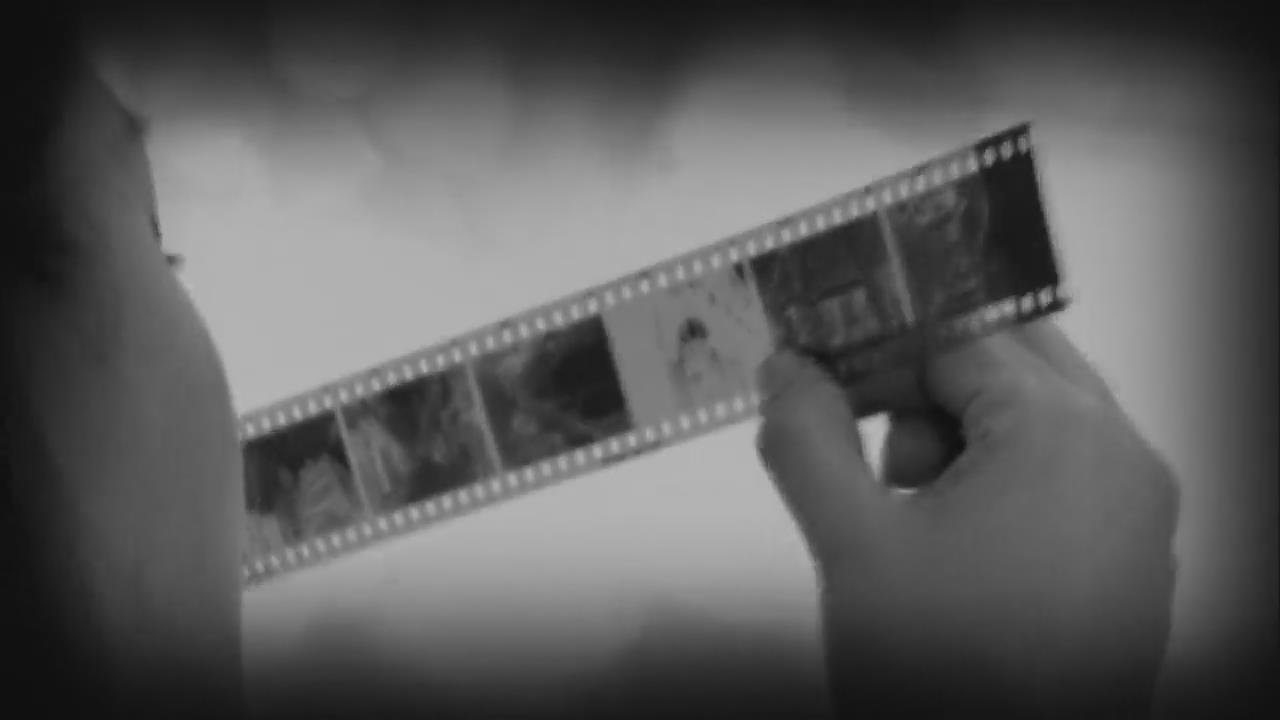Analog Photography
입력 2018.04.27 (15:11)
수정 2018.04.27 (17:03)
읽어주기 기능은 크롬기반의
브라우저에서만 사용하실 수 있습니다.
[Anchor Lead]
A lot of expensive, professional cameras could be seen in the hands of journalists today at the inter-Korean summit, likely all of them totally digital at this point. But there’s a growing interest in old-fashioned analogue film cameras, as we discover in today’s Close Up. Check it out.
[Pkg]
It seems people snap more photos than ever to remember their favorite moments. With the ubiquity of digital cameras and smartphones, you can check out your photos as quickly as you can take them. In the past, amateurs and pros alike left their film at a photo studio to get them developed. It usually took a few days before the photos were ready. Many people remember the old days. This is why analogue film cameras seem to be coming back. There is a special photo studio at this street corner. This is the nation's first wet collodion photo studio. Faded black-and-white photos arouse sentimental feelings. These are photos processed with the wet collodion process, which was developed 150 years ago. This accordion-like machine is a camera, which is 100 years old.
[Soundbite] Lee Chang-joo(Wet Collodian Photo Studio Owner) : "Wet collodian photos, which take some 30 minutes per piece, are appealing, since they are the one and only in the world. The rarity and desperation make them appealing, although they are slow and inconvenient."
This black-and-white photo is one of a kind. Here's how the camera works. A steel plate is inserted into the camera. This liquid is crucial. It is a photo sensitizer. First, the photo sensitizer is applied to the steel plate to make it wet. The steel plate remains wet throughout the photo shoot. This is why they are called wet collodion photos. The plate is ready to start taking photos after it is soaked in the sensitizer for about four or five minutes. The next step is to insert the plate into a holder. It must be inserted as quickly as possible, because the photos should be taken before the plate dries up. Only one photo is taken at a time. The moment is filled with some tension. Film retouching and correction are impossible once the photo is taken. All you can do is wait and hope for a good result. The remaining procedure is to develop the photo. The steel plate is soaked in a special fixing solution. Then the photo gradually appears. It's like magic. The process is complete when the photo is dried and coated. The analogue photo certainly has a different look from digital shots on your smartphone. The mother and daughter look beautiful. An growing interest in film cameras means a new business boom for photo studios. It is filled with a retro, analogue sentiment. Here, customers can develop and print photos they have taken.
[Soundbite] Yoon Pu-bit(Photo Development Shop Owner) : "Film itself is analogue. It is a process of savoring and appreciating. I planned this program, thinking that it would be fun to learn more in detail about this process."
Each of the photos must feel special and meaningful after all this work from taking the photo to development. This next procedure is an indispensable part of film photography. It is printing. Analogue photos are appealing, since you can actually touch and feel them in your hands. Here are the results of the long, patience-requiring process. Will they be good or bad? After a long wait, new photos come amid anticipation and excitement. The photos give you a warm feeling. True, it is not an easy, convenient process. However, the photos have a warm and special feel after all that work. So try putting down your smartphone and snap a few shots on an old film camera to enjoy their retro, sentimental appeal.
A lot of expensive, professional cameras could be seen in the hands of journalists today at the inter-Korean summit, likely all of them totally digital at this point. But there’s a growing interest in old-fashioned analogue film cameras, as we discover in today’s Close Up. Check it out.
[Pkg]
It seems people snap more photos than ever to remember their favorite moments. With the ubiquity of digital cameras and smartphones, you can check out your photos as quickly as you can take them. In the past, amateurs and pros alike left their film at a photo studio to get them developed. It usually took a few days before the photos were ready. Many people remember the old days. This is why analogue film cameras seem to be coming back. There is a special photo studio at this street corner. This is the nation's first wet collodion photo studio. Faded black-and-white photos arouse sentimental feelings. These are photos processed with the wet collodion process, which was developed 150 years ago. This accordion-like machine is a camera, which is 100 years old.
[Soundbite] Lee Chang-joo(Wet Collodian Photo Studio Owner) : "Wet collodian photos, which take some 30 minutes per piece, are appealing, since they are the one and only in the world. The rarity and desperation make them appealing, although they are slow and inconvenient."
This black-and-white photo is one of a kind. Here's how the camera works. A steel plate is inserted into the camera. This liquid is crucial. It is a photo sensitizer. First, the photo sensitizer is applied to the steel plate to make it wet. The steel plate remains wet throughout the photo shoot. This is why they are called wet collodion photos. The plate is ready to start taking photos after it is soaked in the sensitizer for about four or five minutes. The next step is to insert the plate into a holder. It must be inserted as quickly as possible, because the photos should be taken before the plate dries up. Only one photo is taken at a time. The moment is filled with some tension. Film retouching and correction are impossible once the photo is taken. All you can do is wait and hope for a good result. The remaining procedure is to develop the photo. The steel plate is soaked in a special fixing solution. Then the photo gradually appears. It's like magic. The process is complete when the photo is dried and coated. The analogue photo certainly has a different look from digital shots on your smartphone. The mother and daughter look beautiful. An growing interest in film cameras means a new business boom for photo studios. It is filled with a retro, analogue sentiment. Here, customers can develop and print photos they have taken.
[Soundbite] Yoon Pu-bit(Photo Development Shop Owner) : "Film itself is analogue. It is a process of savoring and appreciating. I planned this program, thinking that it would be fun to learn more in detail about this process."
Each of the photos must feel special and meaningful after all this work from taking the photo to development. This next procedure is an indispensable part of film photography. It is printing. Analogue photos are appealing, since you can actually touch and feel them in your hands. Here are the results of the long, patience-requiring process. Will they be good or bad? After a long wait, new photos come amid anticipation and excitement. The photos give you a warm feeling. True, it is not an easy, convenient process. However, the photos have a warm and special feel after all that work. So try putting down your smartphone and snap a few shots on an old film camera to enjoy their retro, sentimental appeal.
■ 제보하기
▷ 카카오톡 : 'KBS제보' 검색, 채널 추가
▷ 전화 : 02-781-1234, 4444
▷ 이메일 : kbs1234@kbs.co.kr
▷ 유튜브, 네이버, 카카오에서도 KBS뉴스를 구독해주세요!
- Analog Photography
-
- 입력 2018-04-27 15:10:42
- 수정2018-04-27 17:03:11

[Anchor Lead]
A lot of expensive, professional cameras could be seen in the hands of journalists today at the inter-Korean summit, likely all of them totally digital at this point. But there’s a growing interest in old-fashioned analogue film cameras, as we discover in today’s Close Up. Check it out.
[Pkg]
It seems people snap more photos than ever to remember their favorite moments. With the ubiquity of digital cameras and smartphones, you can check out your photos as quickly as you can take them. In the past, amateurs and pros alike left their film at a photo studio to get them developed. It usually took a few days before the photos were ready. Many people remember the old days. This is why analogue film cameras seem to be coming back. There is a special photo studio at this street corner. This is the nation's first wet collodion photo studio. Faded black-and-white photos arouse sentimental feelings. These are photos processed with the wet collodion process, which was developed 150 years ago. This accordion-like machine is a camera, which is 100 years old.
[Soundbite] Lee Chang-joo(Wet Collodian Photo Studio Owner) : "Wet collodian photos, which take some 30 minutes per piece, are appealing, since they are the one and only in the world. The rarity and desperation make them appealing, although they are slow and inconvenient."
This black-and-white photo is one of a kind. Here's how the camera works. A steel plate is inserted into the camera. This liquid is crucial. It is a photo sensitizer. First, the photo sensitizer is applied to the steel plate to make it wet. The steel plate remains wet throughout the photo shoot. This is why they are called wet collodion photos. The plate is ready to start taking photos after it is soaked in the sensitizer for about four or five minutes. The next step is to insert the plate into a holder. It must be inserted as quickly as possible, because the photos should be taken before the plate dries up. Only one photo is taken at a time. The moment is filled with some tension. Film retouching and correction are impossible once the photo is taken. All you can do is wait and hope for a good result. The remaining procedure is to develop the photo. The steel plate is soaked in a special fixing solution. Then the photo gradually appears. It's like magic. The process is complete when the photo is dried and coated. The analogue photo certainly has a different look from digital shots on your smartphone. The mother and daughter look beautiful. An growing interest in film cameras means a new business boom for photo studios. It is filled with a retro, analogue sentiment. Here, customers can develop and print photos they have taken.
[Soundbite] Yoon Pu-bit(Photo Development Shop Owner) : "Film itself is analogue. It is a process of savoring and appreciating. I planned this program, thinking that it would be fun to learn more in detail about this process."
Each of the photos must feel special and meaningful after all this work from taking the photo to development. This next procedure is an indispensable part of film photography. It is printing. Analogue photos are appealing, since you can actually touch and feel them in your hands. Here are the results of the long, patience-requiring process. Will they be good or bad? After a long wait, new photos come amid anticipation and excitement. The photos give you a warm feeling. True, it is not an easy, convenient process. However, the photos have a warm and special feel after all that work. So try putting down your smartphone and snap a few shots on an old film camera to enjoy their retro, sentimental appeal.
A lot of expensive, professional cameras could be seen in the hands of journalists today at the inter-Korean summit, likely all of them totally digital at this point. But there’s a growing interest in old-fashioned analogue film cameras, as we discover in today’s Close Up. Check it out.
[Pkg]
It seems people snap more photos than ever to remember their favorite moments. With the ubiquity of digital cameras and smartphones, you can check out your photos as quickly as you can take them. In the past, amateurs and pros alike left their film at a photo studio to get them developed. It usually took a few days before the photos were ready. Many people remember the old days. This is why analogue film cameras seem to be coming back. There is a special photo studio at this street corner. This is the nation's first wet collodion photo studio. Faded black-and-white photos arouse sentimental feelings. These are photos processed with the wet collodion process, which was developed 150 years ago. This accordion-like machine is a camera, which is 100 years old.
[Soundbite] Lee Chang-joo(Wet Collodian Photo Studio Owner) : "Wet collodian photos, which take some 30 minutes per piece, are appealing, since they are the one and only in the world. The rarity and desperation make them appealing, although they are slow and inconvenient."
This black-and-white photo is one of a kind. Here's how the camera works. A steel plate is inserted into the camera. This liquid is crucial. It is a photo sensitizer. First, the photo sensitizer is applied to the steel plate to make it wet. The steel plate remains wet throughout the photo shoot. This is why they are called wet collodion photos. The plate is ready to start taking photos after it is soaked in the sensitizer for about four or five minutes. The next step is to insert the plate into a holder. It must be inserted as quickly as possible, because the photos should be taken before the plate dries up. Only one photo is taken at a time. The moment is filled with some tension. Film retouching and correction are impossible once the photo is taken. All you can do is wait and hope for a good result. The remaining procedure is to develop the photo. The steel plate is soaked in a special fixing solution. Then the photo gradually appears. It's like magic. The process is complete when the photo is dried and coated. The analogue photo certainly has a different look from digital shots on your smartphone. The mother and daughter look beautiful. An growing interest in film cameras means a new business boom for photo studios. It is filled with a retro, analogue sentiment. Here, customers can develop and print photos they have taken.
[Soundbite] Yoon Pu-bit(Photo Development Shop Owner) : "Film itself is analogue. It is a process of savoring and appreciating. I planned this program, thinking that it would be fun to learn more in detail about this process."
Each of the photos must feel special and meaningful after all this work from taking the photo to development. This next procedure is an indispensable part of film photography. It is printing. Analogue photos are appealing, since you can actually touch and feel them in your hands. Here are the results of the long, patience-requiring process. Will they be good or bad? After a long wait, new photos come amid anticipation and excitement. The photos give you a warm feeling. True, it is not an easy, convenient process. However, the photos have a warm and special feel after all that work. So try putting down your smartphone and snap a few shots on an old film camera to enjoy their retro, sentimental appeal.
이 기사가 좋으셨다면
-
좋아요
0
-
응원해요
0
-
후속 원해요
0

















이 기사에 대한 의견을 남겨주세요.